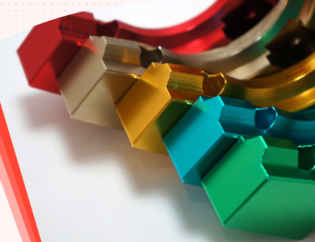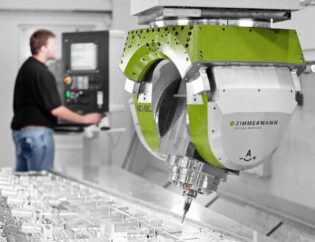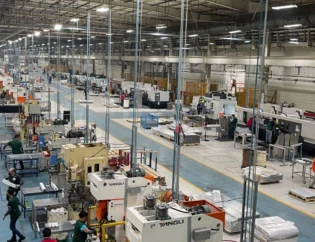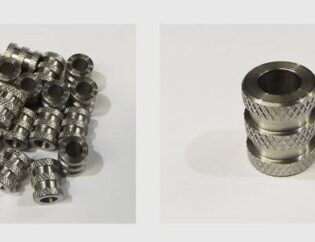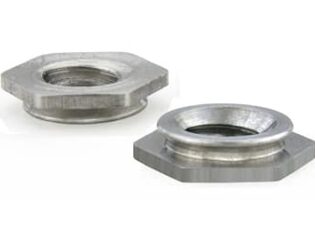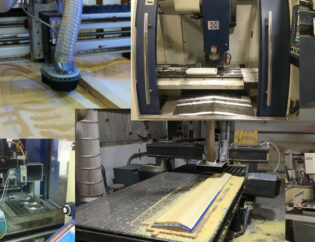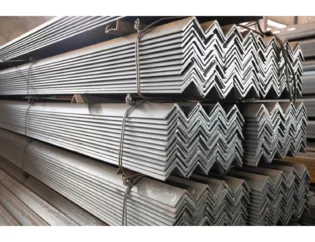Formed sheet metal is a crucial component in various industries, from automotive to aerospace and construction. Understanding its properties and applications can significantly enhance design efficiency and product durability. This guide delves into the intricacies of formed sheet metal, exploring its manufacturing processes, material selection, and design considerations.
Readers can expect to learn about the different techniques used in sheet metal forming, such as stamping, bending, and deep drawing. We will also discuss the advantages and limitations of each method, providing insights into how to choose the right process for specific applications.
Additionally, this guide will cover the importance of material properties, including strength, ductility, and corrosion resistance, which play a vital role in the performance of formed sheet metal products. By the end, readers will have a comprehensive understanding of how to effectively utilize formed sheet metal in their projects.
A Comprehensive Guide to Sheet Metal Forming
From the body of an airplane to the casing of a smartphone, sheet metal is the starting point for an endless array of products that enrich our lives. This versatile material is supplied to manufacturers as rolls or sheets of raw metal before being transformed into valuable industrial products.
Understanding Sheet Metal Forming
Sheet metal forming entails taking thin, flat sheets of metal and manipulating them into fully formed 3D structures. The process transforms a basic raw material into complex finished products using an array of manufacturing techniques. Conceptually, it works much like assembling a puzzle – the final 3D shape is achieved by forming many small pieces before fitting them together into one interlocking structure.
In the past, sheet metal forming was an entirely manual practice requiring specialized labor. Workers would use hammers, presses, and dies to slowly shape the sheet metal into the desired form. Today, automation and robotics have revolutionized metal fabrication, enabling far more intricate sheet metal components to be mass-produced.
Technical Features of Sheet Metal Forming
The technical features of sheet metal forming processes can vary significantly based on the method used. Below is a comparison table highlighting key technical features:
| Feature | Bending | Stamping | Laser Cutting | Hydroforming | Deep Drawing |
|---|---|---|---|---|---|
| Material Types | Aluminum, Steel | Steel, Aluminum | Steel, Aluminum | Aluminum, Brass | Aluminum, Copper |
| Production Volume | Low to Medium | High | Medium to High | Medium | High |
| Precision | Moderate | High | Very High | High | High |
| Setup Time | Low | High | Low | Medium | High |
| Cost Efficiency | Moderate | High for large runs | Moderate | High initial cost | Cost-effective for high volume |
| Complexity | Simple to Moderate | Moderate to Complex | Complex | Complex | Complex |
Types of Sheet Metal Forming Processes
Different types of sheet metal forming processes are employed based on the desired outcome and material properties. Below is a comparison table of common forming types:
| Forming Type | Description | Applications |
|---|---|---|
| Bending | Induces controlled plastic deformation to create angles. | Automotive parts, brackets |
| Stamping | Uses rigid punch and die tooling for high-volume production. | Car parts, enclosures |
| Laser Cutting | Utilizes a high-powered laser to cut intricate patterns. | Aerospace, electronics |
| Hydroforming | Applies hydraulic pressure to shape metal into complex forms. | Automotive frames, aerospace parts |
| Deep Drawing | Pulls sheet metal through a die to create seamless shapes. | Pots, cans, medical devices |
| Curling | Rolls edges of sheet metal for safety and strength. | HVAC ducts, cans |
Advantages of Sheet Metal Forming
Sheet metal forming offers numerous advantages over other manufacturing methods. It is cost-effective, flexible, and allows for rapid production. The processes and equipment used in most sheet metal forming methods are relatively affordable, making it suitable for both high and low-volume production.
The flexibility of sheet metal forming means that the same equipment can be retooled for different products, enhancing its utility across various industries. Additionally, the rapid production capabilities of sheet metal forming allow manufacturers to meet changing demands quickly.
Applications Across Industries
Sheet metal forming is utilized in various industries, including automotive, aerospace, construction, and electronics. For instance, companies like www.xometry.com provide instant quoting for sheet metal forming services, catering to diverse manufacturing needs. Similarly, edcofabrication.com specializes in sheet metal forming for the automotive sector, ensuring high-quality components.
In the aerospace industry, formlabs.com highlights the importance of sheet metal forming in creating lightweight yet strong components. Meanwhile, www.krrass.com focuses on the significance of sheet metal forming in construction, providing essential tools and equipment for effective manufacturing.
Future Trends in Sheet Metal Forming
The sheet metal forming industry is evolving with advancements in technology. Automation and robotics are becoming increasingly integrated into manufacturing processes, enhancing production speed and efficiency. Smart manufacturing and IoT technologies are also being adopted, allowing for real-time data collection and predictive maintenance.
Moreover, the use of advanced materials and hybrid forming processes is on the rise, enabling manufacturers to create more intricate designs while minimizing waste. Sustainability initiatives are also gaining traction, with a focus on using recycled materials and energy-efficient processes.
Conclusion
Sheet metal forming is a vital manufacturing process that transforms flat metal sheets into complex, durable products. Its versatility, cost-effectiveness, and rapid production capabilities make it an essential technique across various industries. As technology continues to advance, the future of sheet metal forming looks promising, with innovations that will further enhance efficiency and sustainability.
FAQs
1. What materials are commonly used in sheet metal forming?
Common materials include aluminum, steel, stainless steel, brass, and copper, each chosen based on the specific requirements of the application.
2. How does bending differ from stamping in sheet metal forming?
Bending involves inducing angles in the metal, while stamping uses rigid tooling to create shapes, typically at higher production volumes.
3. What are the advantages of using laser cutting in sheet metal forming?
Laser cutting offers high precision, the ability to create complex shapes, and minimal material waste, making it ideal for intricate designs.
4. How can automation improve sheet metal forming processes?
Automation enhances production speed, reduces human error, and allows for consistent quality in high-volume manufacturing.
5. What industries benefit most from sheet metal forming?
Industries such as automotive, aerospace, construction, and electronics heavily rely on sheet metal forming for producing various components and products.


